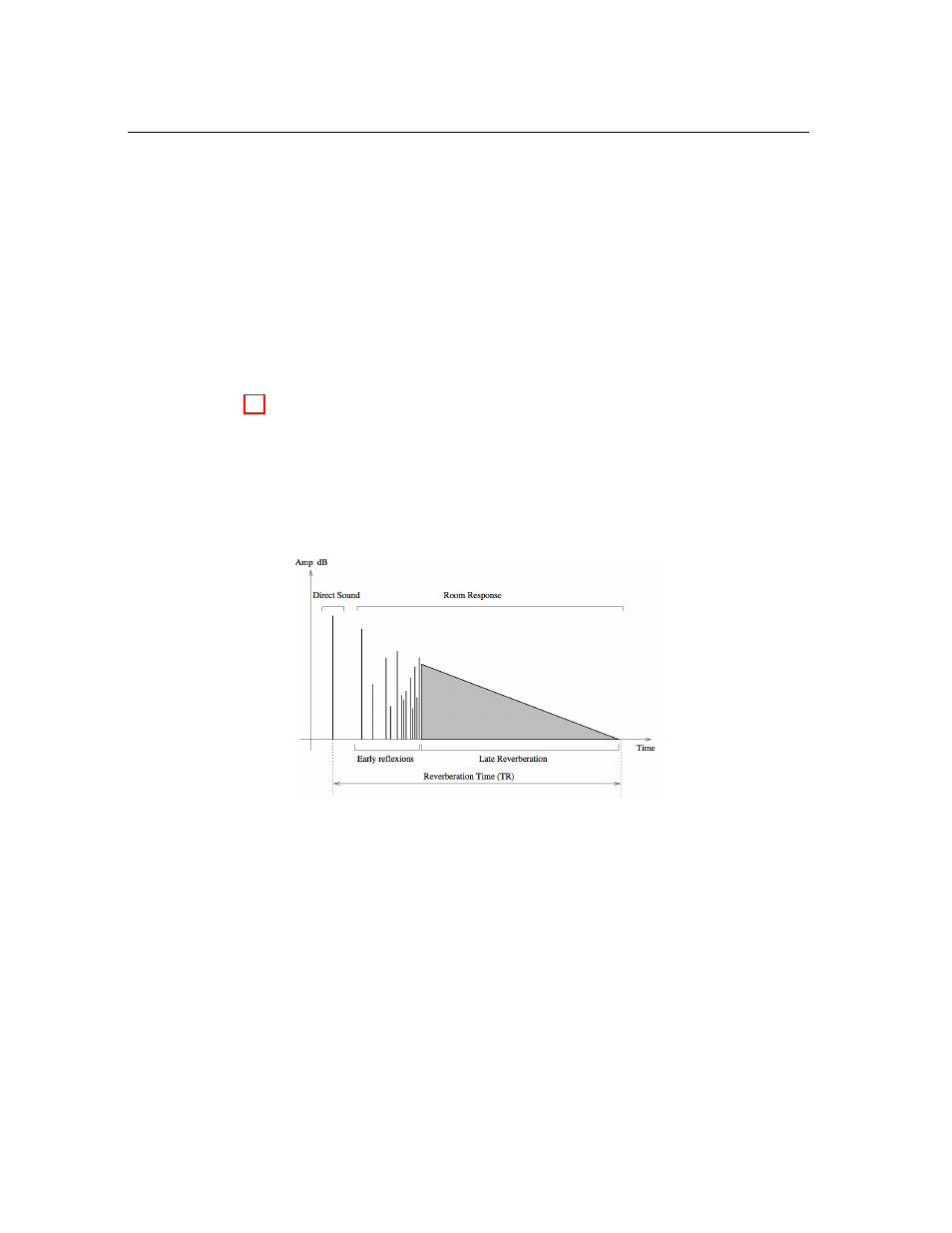Reverb, 12 reverb – Applied Acoustics Systems Chromaphone 3 Upgrade Acoustic Object Synthesizer Plug-In (Download) User Manual
Page 62

62
The Editor View
5.4.12
Reverb
The
Reverb
module is used to recreate the effect of reflections of sound on the walls of a room or
hall. These reflections add space to the sound and make it warmer, deeper, as well as more realistic
since we always listen to instruments in a room and thus with a room effect. This module is located
at the very end of the effects chain in the signal flow.
Impulse Response of a Room
The best way to evaluate the response of a room is to clap hands and to listen to the resulting
sound. Figure 36 shows the amplitude of the impulse response of a room versus time. The first
part of the response is the clap itself, the direct sound, while the remaining of the response is the
effect of the room which can itself be divided in two parts. Following the direct sound, one can
observe a certain amount of echoes which gradually become closer and closer until they can not be
distinguished anymore and can be assimilated to an exponentially decaying signal. The first part
of the room response is called the early reflexion while the second is called the late reverberation.
The total duration of the room response is called the reverberation time (RT).
Figure 36: Impulse response of a room.
Adjusting the room effect
The size of a room strongly affects the reverberation effect. The
Size
selector is used to choose be-
tween the
Studio
,
Club
,
Hall
and
Large Hall
settings each reproducing spaces of different volumes
from smaller to larger.
The duration of the reverberation time depends on both the size of the room and the absorption
of the walls, which is controlled with the
Decay
knob. In a real room the reverberation time is not
constant over the whole frequency range. As the walls are often more absorbent in the very low and
